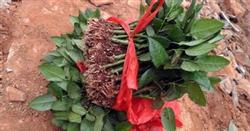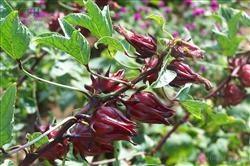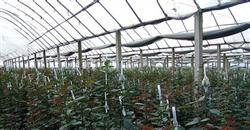Seedling production and pruning of Rose

1. Seedling production Modern Rose Seedling production uses single-section cutting propagation method or grafting propagation method to produce seedlings. (1) single-section cuttings are selected from secondary cut flower branches, and the single-node stem segments with full axillary buds on the branches are taken as cuttings. There are about 0.5 long stem segments on the axillary buds and 2 cm long stem segments under the axillary buds. Then the base of the cuttings is dipped with acetic acid powder, and then the cuttings can be cut in the spray cutting bed. The most important equipment in the spray cutting bed facilities is the spray controller, which is commonly used as a balance control switch or a timing control switch. The spray interval of the former varies with the evapotranspiration rate, so it is more convenient to use. The latter must heckle the spray time at any time due to changes in the weather. Using the method of soilless medium or rock wool cultivation, because the root growth environment can be controlled, rose seedlings are cultivated by cut flowers, and cutting seedlings are mostly used. However, in the general production of cut flowers in soil cultivation, roses are still cultivated with grafted seedlings. (2) according to the different grafting methods, the methods of grafting and dry propagation can be divided into the following types: 1. The scion and the rootstock are single nodes with leaves, and the scion is grafted under the axillary bud of the rootstock and on the other side of the abdomen. 2. Tongue grafting method A section of rootstock 10 cm long. After the leaves and axillary buds are removed, the top of the branch is grafted by tongue, and a scion with two axillary buds and leaves is attached. 3. The rootstock is a section of internodes, the scion is a section of stem with leaves, and the interface is split manually or mechanically into a saddle-shaped gap and tenon, and then joined. 4. in bud grafting method, the rootstock is a segment of internodes, the scion is dormant and has leaves, and it is grafted by T-shaped bud grafting. Except for one more grafting procedure than single-section cutting propagation, all cultivation facilities and equipment and cutting methods are exactly the same. Second, the purpose of pruning and pruning is not only to control the plant height, but also to facilitate the harvest of cut flowers. The renewal of main branches to maintain normal cut flower yield and the regulation of cut flower production period all depend on superb pruning techniques. According to the purpose of pruning, the general pruning work can be divided into three items: plant cultivation, renewal and pruning, and the adjustment of delivery period. (1) the cultivation of a newly planted plant, although it will still blossom, but the branches are slender and short, the flowers are small and the number of petals is small, so they are not suitable for cut flowers. Pruning and pruning during this period should not only cut off dead and diseased branches at any time, but also pick buds at any time to avoid wasting nutrients. Until the sturdy branches developed from the base of the plant, after picking the heart to form the main branch, and then gradually cut off this slender branch. (2) Renewal and pruning roses belong to shrubs. After the main branches are cut, the growth potential of the main branches gradually weakens over time, so it is necessary to pick out the old main branches every other period and cultivate new ones at the same time to maintain the growth potential and plant yield. When pruning, first cut off the weak old branches, each plant retains 3-5 youngest main branches, and then truncate the remaining main branches to 120 cm high. In order to promote the growth of new main branches. (3) the pruning node position is closely related to the adjustment of rose cut flower length and the number of days from pruning to flowering. The flowering branches developed by axillary buds at low nodes have more nodes, longer branches, higher grades, but longer days from pruning to flowering. On the contrary, the higher the pruning node, the fewer flowering branches and shorter branches developed by axillary buds, but the number of eyes needed from pruning to flowering is shorter. Third, disease control rose cut flower facility cultivation except powdery mildew, other diseases are easy to control. The most effective way to control powdery mildew is to pay attention to field hygiene, ventilation and pruning of overdense branches. And in cold and humid, that is, foggy or dewy season, with medicine to prevent the disease.
- Prev

Key points of cultivation techniques of Roselle
Rose eggplant belongs to the hibiscus of Malvaceae, which is an annual herb native to Sudan in Africa. Its purple stem, green leaves, yellow flowers, red fruit, bright color, is the world's most ideal natural plant health drink, seeds can extract oil, high medicinal value, but also edible, under the stem can be used as feed and fuel, it can be said that the whole body is a treasure. For.
- Next

Standardized cultivation techniques of Rose
In recent years, our field has implemented the Science and Technology Spark Project of the Provincial Department of Science and Technology, and successively introduced five new varieties of fresh cut rose, including Meilan lipstick, Bellamy, American Powder, Cardinal and Hongjiu ○, from outside the province, and summed up a set of standardized cultivation techniques. 1. Variety layout: Meilan lipstick and Bellamy are the main varieties in summer.
Related
- Fuxing push coffee new agricultural production and marketing class: lack of small-scale processing plants
- Jujube rice field leisure farm deep ploughing Yilan for five years to create a space for organic food and play
- Nongyu Farm-A trial of organic papaya for brave women with advanced technology
- Four points for attention in the prevention and control of diseases and insect pests of edible fungi
- How to add nutrient solution to Edible Fungi
- Is there any good way to control edible fungus mites?
- Open Inoculation Technology of Edible Fungi
- Is there any clever way to use fertilizer for edible fungus in winter?
- What agents are used to kill the pathogens of edible fungi in the mushroom shed?
- Rapid drying of Edible Fungi

